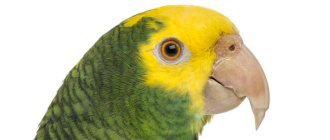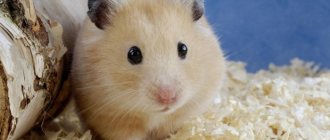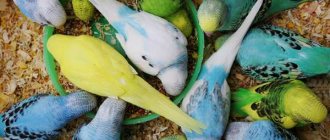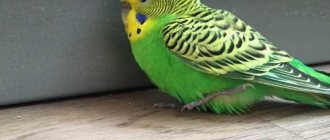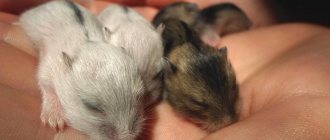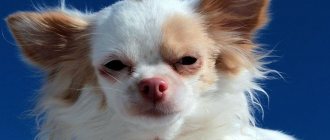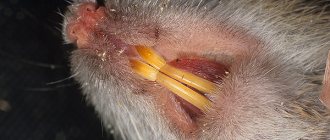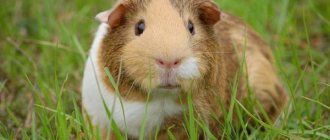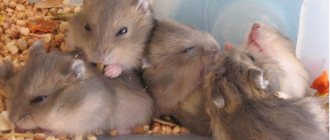Wavys are cute domestic birds that need constant care from the owner. The health, mood and life expectancy of the pet depend on the correctness of this process.
Therefore, sometimes you even have to trim the bird’s beak. It is important to understand the nuances of how to trim a budgie’s beak correctly and not harm your pet. Additionally, it is necessary to use certain preventive measures aimed at preventing the growth of the stratum corneum.
Description of the problem
At first glance, the beak seems hard and lifeless. In fact, it is a sensitive organ of touch that helps to feel heat, cold, touch, objects.
Parrot long beak problem
If the bird cannot independently adjust its length, then it will be extremely difficult for it:
- crush, grab food;
- crack nut shells;
- clean, smooth feathers;
- comb out parasites;
- build a nest, a nest box;
- carry objects;
- climb trees, cage edges;
- turn over the eggs laid by the parrot;
- feed the chicks.
If measures are not taken in time and the bird’s nose is not shortened, this will ultimately lead to death. The bird will not be able to eat normally or take care of itself.
When should a person intervene?
Budgerigars are born fashionistas. Not a day goes by that they don't take care of their appearance. The main tool for hygienic care in birds is the beak. Therefore, its regrowth beyond measure inevitably leads to injury to the delicate skin of pets.
Additional "arm" and "leg"
The wavy beak is a universal assistant. He allows the parrot:
- capture, crush and grind food;
- get rid of parasites;
- scan the temperature and shape of objects;
- provide belay while climbing;
- carry objects;
- build a nest and feed the offspring;
- protect yourself from predators;
- communicate with people or relatives.
If a bird's beak is too large, many important manipulations will be inaccessible to it. This is exactly the moment when the owner’s intervention is simply necessary.
Reasons for regrowth
In most cases, the impetus for a change in the shape and size of a parrot's beak is trauma. Hitting the bars in a cramped cage, colliding with furniture and knocking on glass is not as harmless as it may seem to an inexperienced breeder. At the site of the bird's bruise, horny tissue begins to grow. Because of this, the shape of the beak changes and it quickly increases in size.
Quite often, the cause of rapid regrowth of a pet’s bone organ is an imbalance in the diet. A lack of vitamins or minerals, an excess of fatty feeds and a predominance of soft formulations over hard ones lead to a significant increase in the bird's beak.
There are times when a parrot's beak has to be trimmed due to parasitic infestations and fungal infections. If you suspect an aggressive nature of the problem, you should first have your pet checked by a veterinarian. Most often, parrots are found to have scabies mites. These parasites settle inside the tissues of the cornea and limbs of birds. This leads to the formation of dense growths. In this case, the problem cannot be solved without the help of a doctor.
Birds kept at home do not always have the opportunity to grind their ever-growing beaks on hard and rough surfaces. This is overlooked by many wavy owners. As a result, the stratum corneum of the parrot's beak wears off more slowly than in the wild. At the same time, the natural rate of tissue growth is maintained. This helps to increase the length of the parrot's bony organ.
Important! Do not clear the bark from the perches inside your pet's cage. The rough surface helps the wavy birds to grind off their growing beaks in a timely manner.
In rare cases, the causes of accelerated growth of bone tissue in parrots are hormonal disorders (most often in older males) or genetic abnormalities and diseases of internal organs.
What does a “problem” pet look like?
Changing the shape and size of the beak creates many problems for the bird. This always affects the condition of the pet. A parrot with an overgrown beak changes dramatically in behavior and appearance. He becomes a little slower, sits on the perch more often and flies and chirps less.
The pet's appearance changes for the worse. The feathers fade and often begin to fall out or become puffy on the neck.
Many breeders note that a parrot with an overgrown “horn” has a worsening appetite. The deformed bone shell causes pain to the bird, and the wavy pet is unusually cautious when grabbing pieces of food.
Interesting! An excess of calcium in the diet is harmful for parrots, as it always leads to accelerated growth of bone tissue. First of all, this concerns the beak. You can tell that there is too much calcium by the whitish color of the excrement of winged pets.
Reasons why a parrot's beak is trimmed
An overly large beak on a bird indicates improper care. Wild representatives of the parrot family are constantly on the move. Therefore, they practically do not encounter such difficulties. The claws and nose are worn down unnoticeably, without causing discomfort to the bird.
Reasons for trimming a parrot's beak
It is more difficult for pets in this regard. If the owner does not take care of proper conditions, the length of the organ will increase very quickly, which will negatively affect the bird. It is advisable to equip the cage with everything necessary, as recommended in the instructions.
The owner needs to know the reasons that contribute to abnormal beak growth.
Why trim a parrot's beak?
As the parrot grows, so does its beak. It is very important that this organ is in a healthy condition. If a budgerigar has grown a long beak, this interferes with its full life, so the owner needs to trim it from time to time.
An overgrown stratum corneum interferes with the normal consumption of food, hygiene procedures, communication with you and the pet’s comfortable existence.
Budgerigars need their beak not only for eating food, they use it as a “hand” or a third “leg”: when they climb the bars of a cage or on a play stand, take objects, move them from place to place, and play with toys. In addition, with the help of this “hand” birds explore the world, touch and perceive heat and cold.
In the wild, the beak is also a weapon with which birds defend themselves from enemies, making frightening clicks, plucking and biting. It also helps build nests for future offspring.
That is why it is so important that the budgie’s stratum corneum is in a healthy state.
Accelerated growth
When getting a pet, owners do not always know about the rules for keeping it. That's why they make some mistakes. Rapid enlargement of the nose in a domestic parrot often occurs due to overfeeding with minerals and from:
- There is no special stone, so there is no possibility to grind off the excess.
- Lack of hard food.
In order not to encounter the problem of accelerated beak growth, the budgerigar and other breeds are provided with conditions that are close to natural.
One of the reasons for the rapid growth of the beak
The structure of the beak of a budgerigar
The beak is formed from horny tissue covering the jaw processes. The mandible consists of three bones, the cup-shaped mandible consists of several small bones. The nasal structure is attached to the skull by a special tendon; this ligament allows the budgerigar to move its beak. The bird does not have teeth, so it does not chew food, but grinds it. For this purpose, there are grooves on the inner surface of the mouth. The fleshy tongue pushes the crushed food into the throat.
During the life of a parrot, the stratum corneum constantly grows at the base, moves to the tip and replaces those areas that have worn out. All damage, cracks, chips disappear over time. In a healthy parrot, the upper part of the beak is completely replaced within six months, the lower part is replaced a little faster, since it is much smaller. It happens that a bird gets a severe bruise and a broken beak, then it needs to be carefully trimmed.
The parrot uses its beak confidently, but carefully: it can forcefully beat off pieces from a mineral stone, but it extracts small seeds from berries very carefully and delicately.
Parasites
There are cases when growths appear on the beak due to the presence of parasites on the bird. If observed:
- nose enlargement;
- growths similar to papillomas around the eyes, on the wax, paws,
then these are symptoms that parasitic microorganisms have settled on the pet. To get rid of them, you need to treat areas with growths with aversectin or novertin ointments.
Possible problems
Difficulties may arise when cutting off excess parts:
- you cannot cut off too much of a part, as this can lead to the appearance of significant cracks, and the beak may burst, so harmful bacteria can easily penetrate into the crack;
- if you use rough instruments, such as nippers or forceps, as this often leads to excessive cutting of the stratum corneum, so the bird will bleed;
- if living tissue is touched and blood appears, then it is necessary to pour hydrogen peroxide onto a cotton swab, which is then applied to the wound.
If the procedure is performed by a beginner, then it is advisable to cut off the beak in small parts. Although the process takes a lot of time, it helps to obtain the desired result.
Eating disorders
Minerals and vitamins must be present in the bird’s diet. Their lack disrupts the entire body from the desired rhythm. This causes the nose and claws to grow quickly. Fatty foods affect not only their length. The liver and metabolic processes suffer.
In order not to encounter this problem, it is necessary to balance the parrot’s diet and create the necessary living conditions.
The growth of the beak is also affected by injuries, as a result of which the pet develops an incorrect bite.
Malnutrition as a consequence leads to accelerated beak growth
In adults, due to hormonal imbalance, rapid growth of the nose is also observed.
Prevention
It is quite possible that an attempt to trim a budgerigar's beak will be unsuccessful. Having had a negative experience, you are unlikely to want to return to this process in the future. The parrot itself is capable of limiting the length of the horny growth, obeying natural instinct, but for this it needs to create all the conditions. You can avoid forced circumcision by turning to proven methods:
- fix a mineral stone in the cage, which the bird will peck, erasing the stratum corneum;
- regularly add oat grains to the food; their coarse husks polish the beak quite well;
- offer your pet freshly cut twigs so that he can gnaw and peel off the bark;
- adjust nutrition: remove fertilizing, increase the amount of raw vegetables.
The beak compensates for the parrot's lack of arms and teeth, which is why it is so important to monitor its condition. A beak that is too long and a beak that is cut too short are two extremes that should be avoided. It is not so difficult to reduce the length without radical measures, but there are also ways for advanced cases. Just don’t be afraid to help the bird - it trusts you and expects care.
How to trim a bird's beak at home
Keeping a parrot in the house obliges the owner to monitor its health and appearance. A heavily overgrown beak prevents the pet from absorbing food and cleaning its feathers.
Required Tools
To trim a parrot's overgrown nose, use:
- Special veterinary supplies.
- Nail clippers.
- File.
It is advisable to trim the beak with these devices, because scissors can easily injure it and touch the blood vessels located on it. Hydrogen peroxide is used for disinfection.
How to properly trim a budgerigar's beak at home
Proper pruning
It is advisable to carry out the procedure in a well-lit room. This will allow you to trim the beak without damaging the vessels. You must hold the head firmly so that when the regrown part decreases, you do not harm the bird, because this is real stress for it.
Beginning of work
- Before use, instruments should be disinfected using medical alcohol;
- you need to cut the length of the beak in small parts;
- The cut areas are sharpened with a nail file.
Having completed the procedure, the beak is treated with a solution of potassium permanganate. In this way, germs are neutralized.
Help the parrot survive an unpleasant moment in his life. Place his favorite food in the cage, pour some water, and do not disturb him for about a day so that he has the opportunity to recover from the stress he received. Don't worry if he's a little lethargic and doesn't start eating right away. After all, he is also a living being and also requires care, attention, love.
Beak trimming
It happens that when shortening, blood vessels are affected. In this case, the damaged area is treated with hydrogen peroxide.
If the owner himself cannot trim the pet’s nose, then it is better to contact a specialist.
Main reasons for growth
Wild birds in nature are not limited in their movements. They move freely: they run a lot, climb trunks, cling to branches. Such vigorous activity has a good effect on the condition of the claws and beak, which wear down naturally. At home, budgies stay inside a cage for days, and many of the pleasures of their free relatives are not available to them. Inexperienced breeders sometimes cannot understand why a parrot's beak grows quickly. And this comes precisely from an imposing lifestyle and cramped conditions.
It’s good if the owner does not forget about fresh twigs and sepia, which the pet needs so much. If the cage only has a wooden perch, your budgie may try to sharpen its beak by rubbing it against the perch or bars. This load is not enough to control the length of the beak: it begins to grow, bends and breaks off.
The main factors influencing the rapid growth of the stratum corneum:
- consumption of feed with mineral supplements;
- enhanced vitamin supplementation;
- metabolic disorder;
- liver problems;
- hormonal disbalance;
- congenital disease;
- malocclusion due to injury.
The bird can be cautious and take care when it feels painful. The fragile, brittle cornea grows and becomes deformed when it is infested with mites.
If you notice that the parrot is experiencing discomfort, help it - shorten its beak, otherwise the bird will not be able to eat properly. There is nothing wrong with cutting your hair, but you should be well prepared for this event to avoid unpleasant consequences.
Is nail trimming painful for parrots?
It does not harm the bird if you pinch your nails. This can be compared to cutting human hair or cutting nails. But please note: this does not harm the bird as long as you hold the bird correctly. Don't squeeze her or her paws. If you cannot do this, contact your veterinarian and ask for help. Or let your avian veterinarian show you how to trim your budgie's nails yourself.
Mites on a parrot's beak
Budgerigars whose beaks are infested with mites often suffer from severe beak malformations. Sometimes it grows too long and in some cases the wrong shape. You may want to help, but it is very dangerous to trim a beak that has structural damage caused by mites.
Why does the parrot grow a long beak?
There are several reasons for this unpleasant phenomenon:
- excess minerals, in particular calcium, in the bird’s diet;
- predominance of soft food in the feed and lack of grain;
- the absence of a special stone in the cage for turning the beak and tree branches;
- consequence of the injury;
- changes in the horny part of the bird's mouth due to the presence of a fungus or mite infestation;
- liver problems;
- consequences of a birth defect.
What is needed to trim a parrot's beak?
Nail clippers are suitable tools for trimming budgies' nails. But be careful: sometimes the nails bounce off during the cutting process and can get into your eyes.
Another important thing you should have on hand is an orthostatic medication such as ferric chloride because you can never be sure that you won't damage a blood vessel. It is always dangerous when a bird's claw bleeds, and at the end of the trimming process you should ensure that the blood vessel is not damaged.
Always keep in mind that a small poultry only has a small amount of blood in its body. Therefore, in relation to a bird, a few drops of spilled blood is quite a lot.
Prevention of beak growth
To prevent your parrot from having to trim its beak too often, you should prevent its excessive regrowth. To do this, increase the number of objects in the cage on which the bird can grind its beak. Plastic toys and perches are replaced with wooden ones. The parrot is regularly allowed to chew on branches of fruit trees, as well as sepia or mineral stone. The proportion of solid feed – grains and seeds – is increased in the diet. Vitamin supplements are administered periodically, without exceeding the dosage indicated on the package.
When walking, make sure that the parrot does not get injured. Particular attention should be paid to curtains of windows and mirrors. If mites are the cause of the formation of horny growths, the affected areas are treated with aversectin ointment. The cage is kept clean, preventing the proliferation of parasites and the development of fungal infections.
